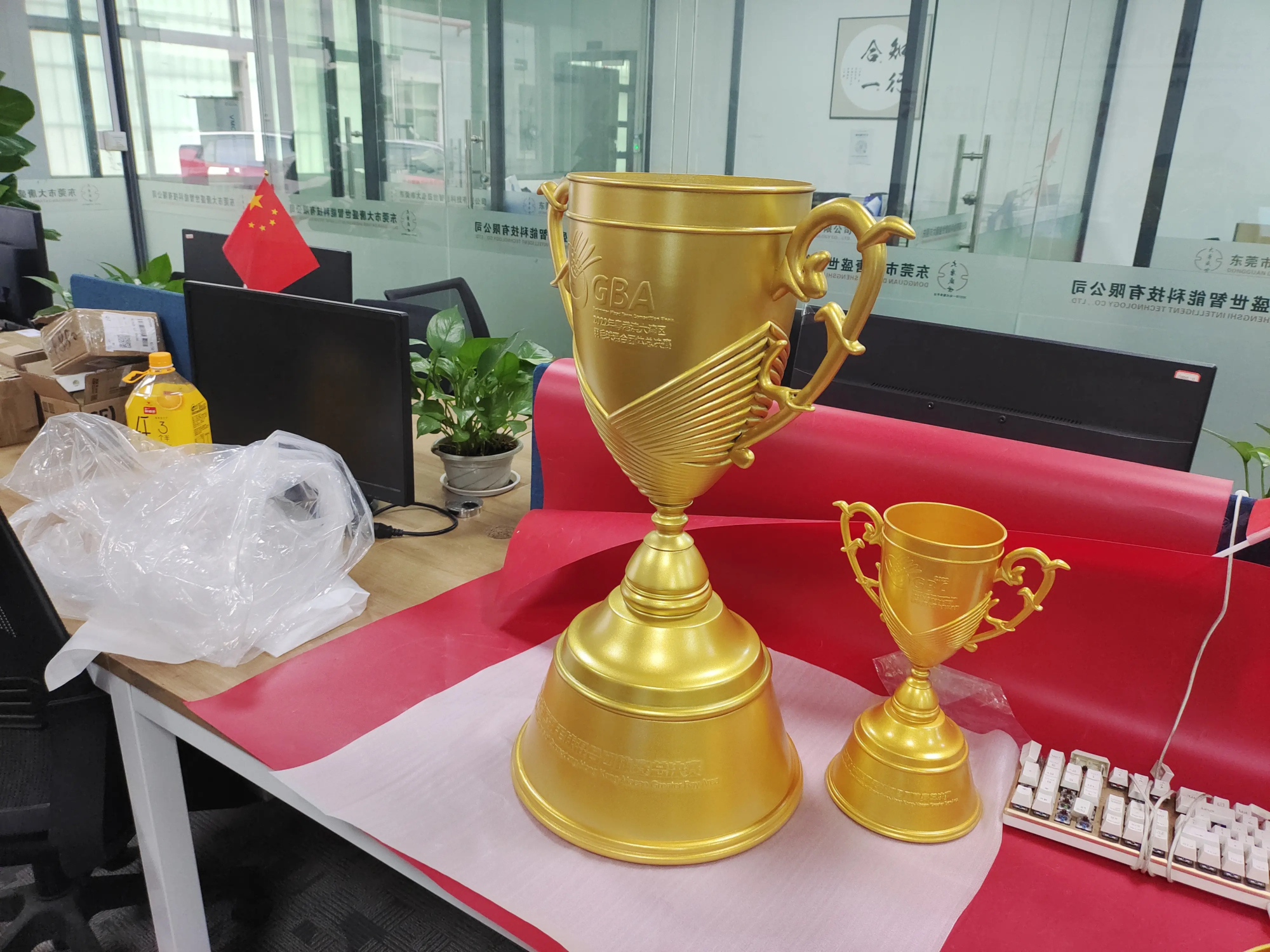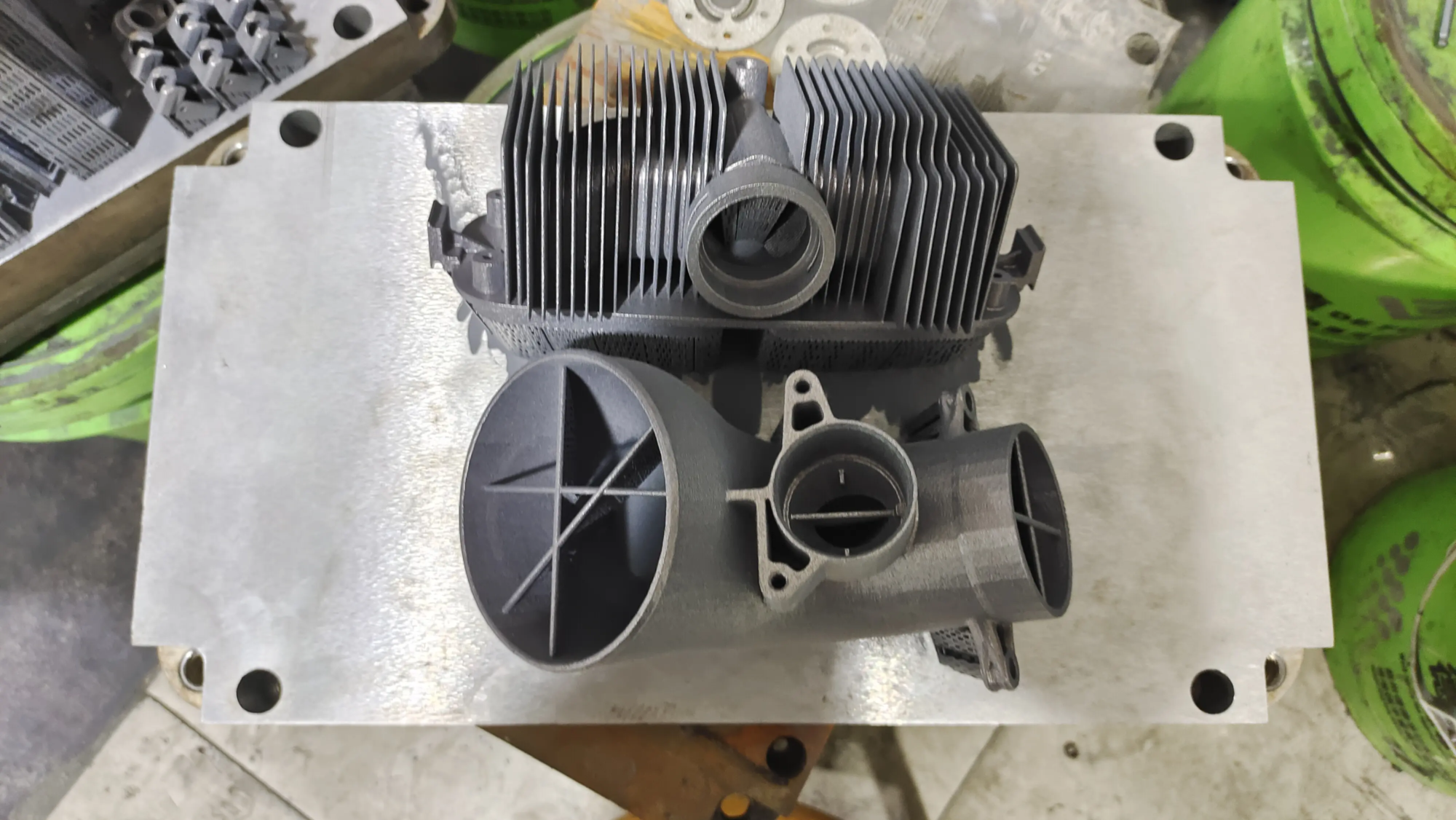The final guide to 3D printing your own headset rack
Headphones are essential equipment for many, but finding the perfect stand can be a challenge. Ready-to-do options are often disappointing – too fragile, too expensive or just boring. This is the ray of 3D printing. Whether you’re an amateur who owns a desktop FDM printer or seeks professional-level quality, creating custom headset racks combines practicality with creative freedom. This guide will take you through the process and explore when to leverage professional services to achieve amazing results.
Why 3D printed headphone racks?
- Unrivaled customization: Design (or download) the stand that perfectly suits your headphone size, shape and aesthetics. Personalize it with a logo, text, or a unique geometric pattern.
- Cost-effective: It is much cheaper than many quality metal racks, especially with common filaments such as PLA or PETG.
- Perfect for: Ensure optimal support for specific headphones to prevent headband or earmuff pressure.
- Material versatility: Choose from bright colors, wood composites, sturdy PETs, and even explore advanced materials such as nylon or metal with professional services.
- Sustainability: Reuse remaining filament pieces and reduce dependence on mass-produced items.
Your step-by-step 3D printing guide:
Design phase: Select blueprint
- Option 1: Use the preset model: Platforms like Thingiverse, Printables, Cults3D and Thangs offer hundreds of free and paid headset designs. Filtered by printer type (FDM/SLA), complexity and size.
- Option 2: Design your own: Use CAD software (Fusion 360, Tinkercad, Blender, Freecad) or Parameter Design Tool (OPENSCAD). Main things to note:
- aspect: Accurate measurement of headband thickness and width your earphone.
- Stablize: Ensure a wide weighted base to prevent tilting. Consider adding non-skateboards.
- Support points: Design a smooth, round contact surface to avoid damage to the filling pressure points over time.
- aesthetics: Combined with cable management hooks, phone holders or decorative elements such as lighting. (Check platforms like Pinterest for inspiration!)
- Printability: design Minimal overhang (Use Chamfers/Files), avoid extremely thin walls (Use >= 2mm), and make sure the model is watertight. The free CAD software for Fusion360 (such as Fusion360) works well.
Material selection: Strength satisfies style
- PLA: Easiest to access and easiest to print. There are endless colors/textures (in the dark, wood fill, marble). Unless most headphones are very heavy, that’s enough. It has less resistance to heat or prolonged stress.
- PETG: Highly recommended. Compared to PLA, it has excellent durability, impact resistance, good layer adhesion and better heat/water resistance. Printing challenges are a little bit, but are essential for heavy-duty headphones or harsh environments.
- ASA/ABS: Higher temperatures and UV resistance are ideal for brackets near windows. A closed printer and careful exhaust due to smoke are required.
- Nylon (PA): Extremely strong and flexible. Needs a high temperature heating table/heating chamber and careful drying. Best for professional printing.
- Metal (SLM/adhesive spray): For unrivalled strength, weight and quality feel (stainless steel, titanium, aluminum alloy). Specialized production, such as Greatlight’s SLM (Selective Laser Melting) service is required.
Slice and print: Turn numbers into physics
- Slicing software: Configure STL files using Prusaslicer, Cura, or Bambu Studio.
- Key settings:
- Layer height: 0.2mm balance speed and details; 0.15-0.12mm for excellent smoothness.
- filling: 20-30% are usually sufficient to achieve stability. For heavier headphones or higher designs, it will increase to 40-50%+. Use capability or cubic pattern for strength and weight.
- Perimeter/Wall: At least 3 walls (top, bottom, vertical) to achieve stiffness. Add extra power.
- support: Use only trees or organic support for complex overhangs. Optimized placement to minimize contact area. For complex shapes, consider design modifications to avoid full support.
- Bed adhesion: It is highly recommended to use edges (5-10mm) for tall narrow shelves. Ensure the perfect bed.
- Printing execution: Dry the silk in advance. Monitor the first few floors. Print slowly (~50mm/s) to maximize accuracy.
- Post-processing: Endpoint
- Support removal: Carefully remove the bracket with rinsing cutter/tweezers. The sand starts at ~120 grain size to 400+ for a smooth finish. Always wear PPE.
- Grinding and filling: Fill the layer lines/micro gaps with sandpaper/filler. Wet sand can produce the best results.
- Painting/Paint: Use primer spray paint. Apply acrylic/model paint. Remove varnish to protect paint or exposed plastic. For scratch-resistant, premium finishes, consider professional powder coatings on metal prints.
- assembly: For multi-part brackets, use strong adhesive (super glue, epoxy) or mechanical fasteners. Inserting nuts/bolts (pause function) during printing will create super strong joints.
When DIY reaches limit: Professional 3D printing service
Home FDM or resin printers are specialized in prototypes and personal uses. However, if you ask:
- Metal strength and weight: The sturdy steel or aluminum frame feels really good.
- Complex, fine design: FDM is difficult to capture complex aesthetics.
- Production grade finish: Perfect for polishing, plating, painting or powder coating.
- High temperature/high strength materials: Nylon, peeping or real gold.
- Multiple units: Used for gifts, events or small business sales.
…This is where to work with professional rapid prototyping experts Great Become priceless.
Why choose Greatlime for your stands?
exist GreatWe focus on using digital design to convert digital design into high-quality physical parts Advanced SLM (Selective Laser Melting) 3D Printer and precise processing. We understand the nuances of creating functional and aesthetically pleasing items, such as headphone racks.
- Tip of metal printing: Production stalls made of sturdy stainless steel, lightweight titanium or stronger aluminum alloy using our industrial SLM machines.
- Complete material flexibility: In addition to the products provided by desktop printers, we deal with a variety of technical materials.
- One-stop post-processing: Our expertise includes expertise such as precision machining, suitable for perfect precision machining, fine polishing of mirror finishes, durable powder coatings in any color or advanced coatings.
- Speed and reliability: Need to be fast or batch fast? Our systems and processes are optimized for fast turnaround while maintaining uncompromising quality – effectively addressing the need for rapid prototyping.
- Custom precision for demanding projects: The boundaries of our thriving development. If your design requires complex interior geometry or requires advanced materials that cannot be printed at home, we will design the perfect solution.
in conclusion
3D printed headset racks are a fulfilling project that provides tangible utilities and creative satisfaction. Passionate amateurs can access the process – from choosing the ideal design to fine-tuning the print and applying the embellishment effect. Remember to focus on the robustness in your design and identify durable materials such as PETG for reliable use.
Professional rapid prototyping services for designs requiring durability, weight, visual impact or peak use of advanced materials Great is the definite solution. Leveraging industry-leading SLM metal printing and comprehensive finishing services, we turn complex or high-performance concepts into stunning, lasting reality.
Ready to improve your project? Whether you are perfecting DIY prints or needing to manufacture premium stalls, Greatlight combines expertise, technology and commitment to deliver precise solutions. Customize your precision fast prototyping parts now at the best prices!
FAQ (FAQ)
Q1: What is the best 3D printing material for headphone racks at home?
- A1: Petg It is the best advice. It provides excellent strength balance (much larger than PLA), good layer adhesion, durability and stable temperature/creep resistance. For heavier headphones or warmer environments, PLA is easier, but is less robust in the long run.
Q2: How to prevent my 3D printing booth from tipping over?
- A2: Focus on the basics! Make it wider than the top of the headphones. You can add weight by designing hollow chambers inside the base to fill sand, BB or metal nuts/bolts before sealing. Using heavier filaments (wood-filled PLA/PETG) for bases or adding solid non-slip rubber feet can also help a lot.
Q3: Where can I find a good headset design?
- A3: Popular repositories include Thingiverse,,,,, Printable,,,,, cults3dand Tang. You can also buy advanced designs on platforms such as cults3d or myminifactory. Search with keywords "Headphone rack," "Headphone holder," "Gaming headset rack," or specific headphone model.
Question 4: My design has overhangs. How much problem is that?
- A4: Overhangs that exceed about 45 degrees in a vertical direction usually require support for successful FDM printing. Although support is manageable, they increase printing time, waste wires, and leave a rougher surface that requires a lot of post-treatment. Best Practices: Use Chamfers/Files (gradual angle) to modify the design, or split the model to eliminate steep overhangs. Avoid providing unnecessary scaffolding for your own sanity!
Q5: My headphones damage the 3D printed stand and vice versa?
- A5: Yes, it’s possible. Protect headphones: Avoid sharp edges on hooks/bases/contact points in the stands. Ensure sufficient contact area to smooth/sand downwards the surface. Strengthen weaknesses in the model or use stronger fillers. Protect your position: Prevent long-term stress or excessively thin parts. Extremely heavy headphones may guarantee metal printing. PETG is obviously stronger than PLA.
Question 6: Why choose a professional service like Greatlime instead of printing yourself?
- A6: Choose professional services when you need:
- Metal structure: For unparalleled strength, weight, quality aesthetics (Polish/plated).
- Highly complex or detailed aesthetics: In addition to FDM functionality (thin details, complex designs that can be captured most with SLM/resin).
- Top surface finish: Professional polishing, powder coating or painting.
- Production-grade durability: Nylon, peeping or metals.
- Lack of personal equipment/expert knowledge: Get perfect results without your own printer or advanced skills.
- Batch production: Efficiently create multiple positions.
Question 7: How does Greatlight ensure the design accuracy of custom booths?
- A7: We combine:
- Pre-selected DFM (Manufacturing Design) Inspection: Analyze your CAD file to identify potential printing issues or optimization opportunities for optimizing strength/surface surfaces.
- Advanced Industrial Equipment: If machining is required, the precise SLM printer and CNC computer calibrate the micro level tolerances.
- Strong quality control: Use accurate measurement tools (CMM, caliper) to ensure dimension matching specifications. We noticed small things.
Q8: What file format should I provide on Greatlight?
- A8: Steps (.STP/.STEP) or IGS (.igs/.iges) Documentation is ideal. They retain precise 3D geometry and features. We can also use common grid formats stl(.stl) or OBJ (.OBJ)however, note that for the highest fidelity, step/IG is preferred, especially for complex professional prints including processing.





